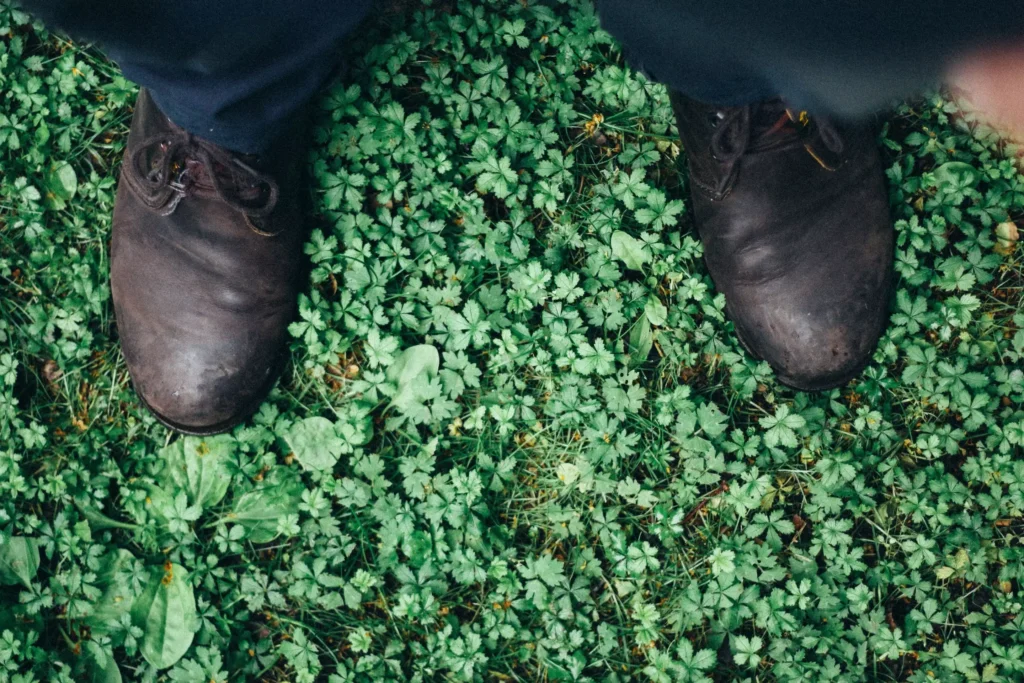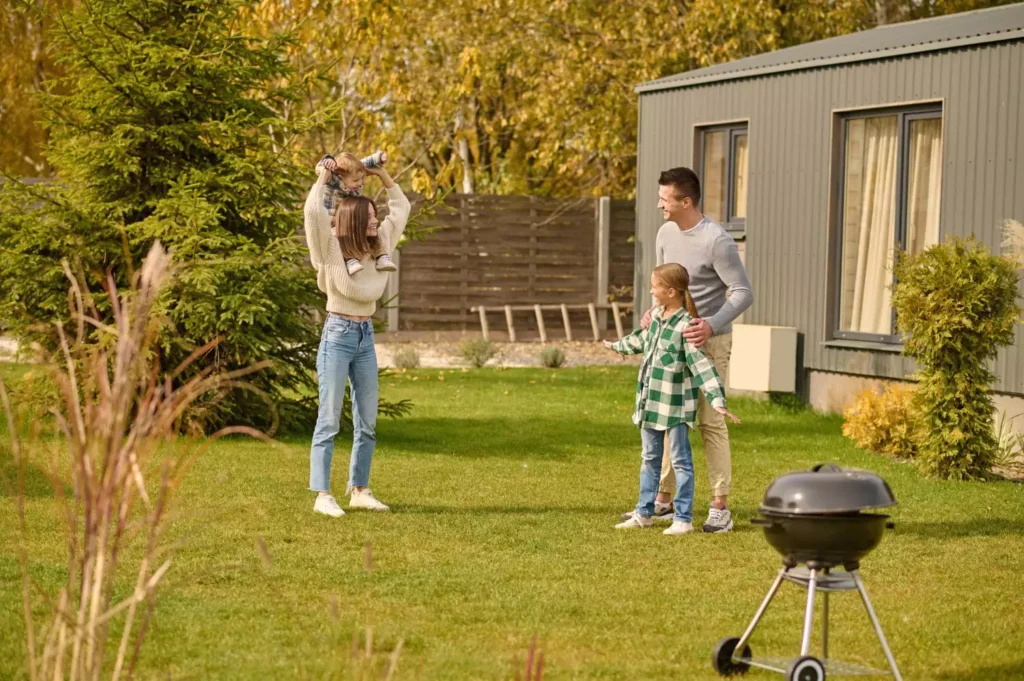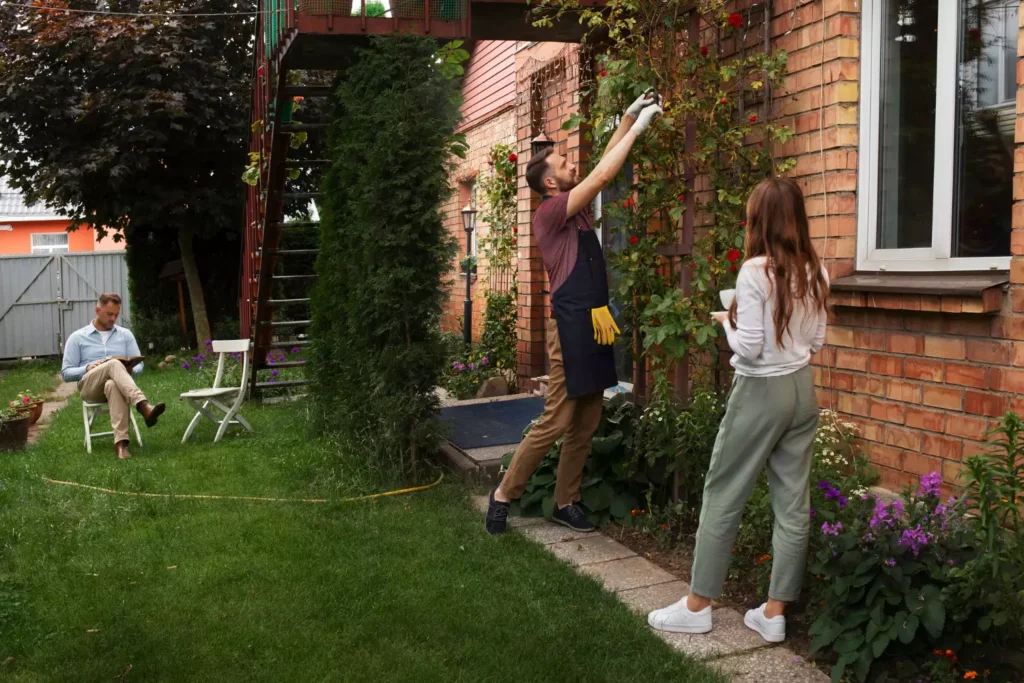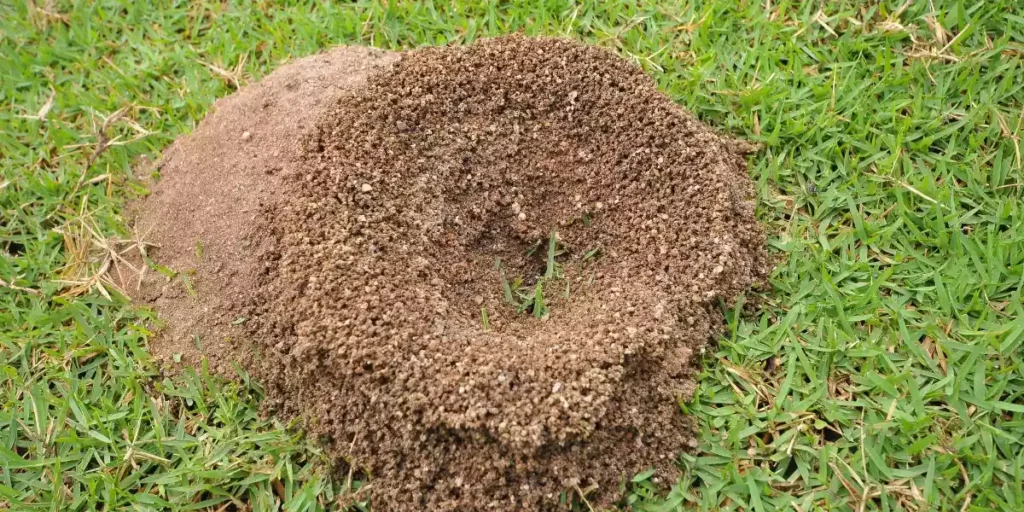Basil is known as one of the easier herbs we can grow. However, every plant has its own needs and requirements. When we neglect it, we can expect side effects. One such unwanted situation is yellowing of the leaves.
Yellowing of basil leaves can be caused by factors such as excess water, insufficient sunlight, low temperatures or even parasites and diseases. Depending on the situation, the reason for the change in color of basil leaves can vary.
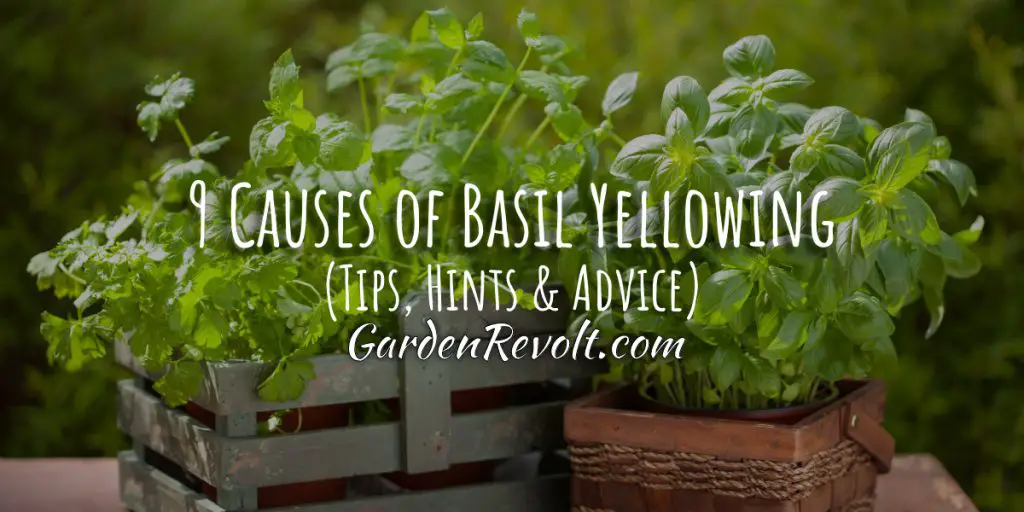
Why Does Basil Turn Yellow?
- Insufficient sunlight
- Too much water
- Parasites
- Low temperature
- Deficiency of nutrients
- Plants planted too densely
- Poor soil pH
- Diseases
- End of life cycle
Just by reading my article, you will know all the causes of yellowing of basil leaves and also the solutions. Nothing is lost and perhaps a small change will save the plant and restore its beautiful and distinctive green color.

Insufficient sunlight
Basil should be planted in a location that provides at least six to eight hours of direct sunlight. This can be quite a challenge if you are growing basil in pots on a balcony or in a garden where there is not enough sun. However, if the sun shines for four to five hours, it’s worth a try. Plant the seedlings in the sunniest spot. If, on the other hand, it’s a place with only an hour or two of light, choose shade-tolerant herbs such as parsley, cilantro or mint. This is not an option, as basil will not thrive in the shade, and its leaves will begin to yellow and wither.
Many plant lovers, would like to grow basil at home in autumn, winter and early spring. This seems like a pretty good idea, nevertheless growing basil at home is troublesome. Proper lighting is required, otherwise the basil leaves will quickly turn yellow.
To begin with, put pots of basil in the sunniest window. However, know that even a south-facing window may not provide enough sunlight. This is especially troublesome if you live in cold regions of the world and it’s winter. However, we have a simple solution: a grow lamp.
You can use table lamps, under-counter lamps or even spotlights for this purpose. One way is to place a special LED lamp under the kitchen countertop and use it to grow your favorite herbs. The lamp is on for sixteen hours each day, and an inexpensive timer switch is used to turn it on and off.
Too much water
The fastest path to basil destruction is overwatering. Basil is an herb that needs well-drained soil – slightly moist, but not wet. Excess moisture leads to root rot, leaving the plant unable to take up essential nutrients. Indeed, yellowing of the leaves is one of the first signs of root rot, and it is more common with potted basil than with garden basil.
If you grow basil in pots, you will reduce the risk of overwatering by placing seedlings in pots with drainage holes. One drainage hole will not provide enough drainage, so I suggest making more of them. For a pot with a diameter of 20-25cm, you can make up to six such holes.
Drainage holes are relatively easy to make. Depending on the type of pot, we can make such holes with a drill or a heated rod, which will easily melt the plastic (and not crack the pot!).

The matter gets a bit more complicated with ceramic and clay pots. They are more prone to cracking so it pays to be more careful. Having a drill and a 5mm drill bit, you can gently and slowly start drilling holes. Doing this with sensitivity and delicacy will ensure that the pot does not shatter.
Fill the pot with light potting soil, avoiding garden soil. Garden soil is too dense and will compact after each watering. Water when necessary, not out of habit. When the weather is dry, I water my garden basil every week. Remember to water the plants deeply to ensure deep rooting and drought resistance. Pots require more frequent watering than garden beds, usually every day or two during the summer. If you’re not sure if your basil needs watering, stick your finger into the soil about 5 centimeters deep. If the soil seems dry to you – go ahead and water your basil.
Potassium deficiency
Due to potassium deficiency, basil leaves may turn yellow, mainly among the veins. Like any other herb, basil needs minerals to thrive. These ingredients are many. The best-known minerals for basil are potassium, phosphorus and nitrogen.
Potassium deficiency is the most difficult to detect. Generally, a good rule of thumb is to watch where yellow areas appear. If they do, chances are good that they are yellow areas. If so, there is a good chance that there is a potassium deficiency.
If this is the case, you can apply a potassium-rich fertilizer. These are available at nurseries and online stores. Perhaps easier and cheaper, in the long run, is to simply change the potting soil. If the potting soil does not contain too much fertilizer, the basil will have good conditions for growth.

Parasites
As a garden owner, I can safely say that nocturnal forest dwellers such as deer, roe deer and hares do not like the intense smell of basil. But unfortunately, insects are another matter. Aphids, mealybugs, as well as slugs, can take an interest in your basil.
In my article about companion plants for basil, I wrote that velvets are great in combination with basil. Velvets repel aphids, ants and even moles. They also attract soil nematodes to themselves – this helps other plants (including basil) grow in peace.
Holes in the leaves are a visible sign of damage done by pests, but yellowing leaves can also be a sign of insects such as the aphids already mentioned. Aphids are small insects that are green, gray or brown and suck plant juices from leaves. Such damage can cause distortion of the leaves, as well as yellowing.
Always take a closer look first. If aphids are the problem, they are probably concentrating on new growth or hiding under the leaves. Ladybugs and hornets, as well as other beneficial insects, feed on aphids, so don’t take further steps if you spot them among the aphids. If there are no beneficial insects, you can knock the aphids off the plant with a light stream of water from a garden hose or watering can. You can repeat the activity several times a week, as needed.
Low temperature
Delicacy is one of the characteristics of basil – it is sensitive to low temperatures. For this reason, it should not be planted outdoors in spring too early. It is best to wait until temperatures are stable above 10°C during the day and night. And preferably wait until the temperature is higher than 15°C! If the temperature is too low, the plants will not have time to take root and will not start to grow. Planting basil in the early months is a common reason for yellowing of the leaves.
In late summer and autumn, when the weather begins to cool down, you may also notice yellowing of basil leaves. By then, the season is coming to an end and it is best to harvest while the plants are still in good shape and most of the leaves look healthy. Use pruning shears or garden shears to cut the stems so you can dry the leaves or prepare pesto from them.

Nutrient deficiency
Yellowing of leaves can also indicate a nutrient deficiency. Like any plant, basil demands constant access to nutrients. Only then will it be able to produce abundant, aromatic leaves. A layer of compost on top and a little slow-release organic vegetable fertilizer should be sufficient.
In the middle or late summer, basil grown in pots can be susceptible to nutrient deficiency. This occurs as a result of frequent watering, which leaches nutrients from the potting mix. A way out of this situation is to fertilize basil plants with liquid organic fertilizer. You can do this every two weeks or according to the instructions on the product label.
Plants planted too densely
Very often you can find a small bush of basil in stores, nesting in a tiny pot. And it is almost always several seedlings, tightly crowded together. It’s even hard to separate them because their roots are tangled together. This is taking the easy way out, but apparently stores find this practice profitable. And it is also problematic.
If you have planted a dense cluster of basil seedlings in a pot or garden bed, they will grow well at first, but after a few weeks they will spread too much and begin to weaken.
Yellowing of the leaves can be considered the first symptom. Therefore, instead of planting all the seedlings in one pile, separate them and transplant them individually. I recommend growing your own seedlings. If you provide them with adequate space to grow, you can or will enjoy beautiful basil bushes.
It is equally important to avoid compacting basil plants when transplanting them into gardens or pots. Plants that are planted too densely will compete for light, moisture and nutrients, in addition, they will become more vulnerable to the risk of diseases caused by lack of air circulation. All of these problems can cause yellowing of the leaves. Most varieties of basil should be planted 20-30cm apart.
Still another, both simple and interesting, way to improve soil aeration, creating so-called air pockets, is to move the soil with a wooden toothpick or other small plastic “accessory”. However, try not to damage the roots. If you encounter resistance from the root, simply remove the toothpick and try another place. Still another way is to squeeze the pot (if it is plastic), which will form air pockets and break up the compacted mass of soil.

Earth’s bad pH
It is also known that high pH levels (above 8) cause basil leaves to turn yellow. This results in a lower presence of many nutrients. Among them is nitrogen, which, among many other functions, is responsible for the green color.
The proper pH for basil is 7-7.5.
If you used old soil to plant new basil – it may have been slightly more acidic and poorer in essential minerals. To check the pH of the soil in which you have planted basil, all you need is an ordinary acid meter available in stores.
On the other hand, if the water you water your plants with is very alkaline, it may harm them. It may be more effective to check the water dripping from the pot’s drainage holes when watering. This is because this is the water that reaches the roots of the basil plant. It can probably be slightly different from the one you pour in, as the water reacts with the minerals in the soil.
Diseases
Powdery mildew is a common disease that attacks the leaves and stems of plants. In this case, the first symptom also is yellowing of the leaves. When you look underneath, you are more than likely to see a gray-purple patch. This is a fungus-like organism that spreads with the wind, but it can also enter the garden through infected seeds or seedlings. If you have detected the presence of powdery mildew on your basil, I suggest harvesting all the undamaged leaves and uprooting the plants. If you really want to, you can try spraying them with a product for control and prevention of fungal diseases. I personally would prefer to uproot such a bush.
Some varieties of basil are resistant to various diseases, in this case to powdery mildew. This is, for example, the variety “Prospera”. If you have the opportunity to get such seeds – I recommend trying it.
Unfortunately, powdery mildew of basil is not the only disease of basil. Other common diseases are fusariosis and so-called bacterial leaf spot.
Remember that splashing water can spread diseases. Therefore, do not splash the entire plant when you water it. It is best to direct the water directly to the soil.
End of Life Cycle
Most varieties of basil are annual herbs. They can last a little longer if given adequate temperature, watering and proper pruning.
However, as they begin to flower, the plant will slowly begin to dry out. This process will, among other things, cause the basil to yellow and die.
With frequent pruning you will stimulate its growth. You should also remove the flowers even before they appear (as soon as you notice a bud forming).
Basil’s life mission is to bloom. This is when its final stage focuses on seed production. However, if you pick the flowers, you ” delay” the death of the plant. This does not work indefinitely, of course. After some time, the plant will eventually die. A little longer than usual, but always something!
So you have now learned the possible causes of yellowing of basil leaves. The main thing is to be aware and observe what is going on around us. And being additionally armed with useful knowledge, you will be able or able to correctly respond to the problem – without causing further or greater damage.

